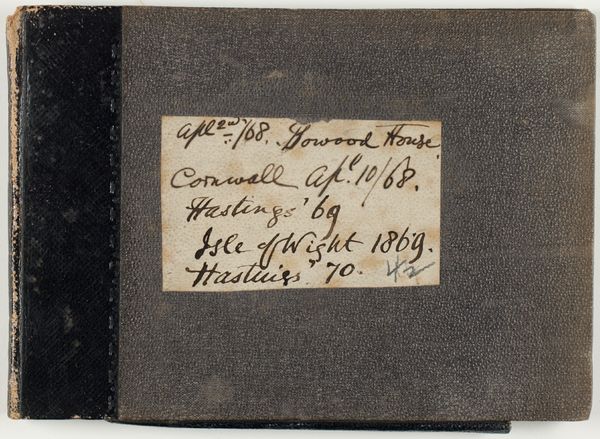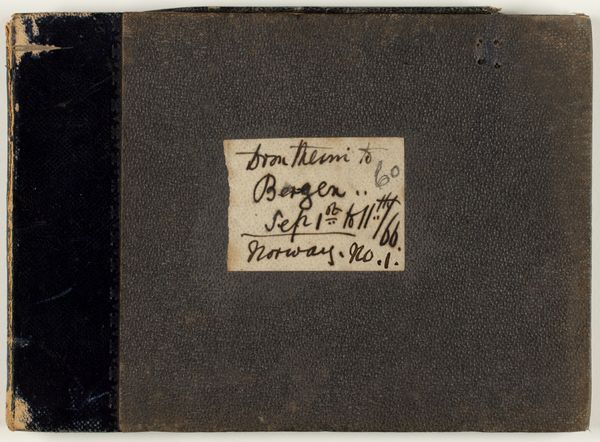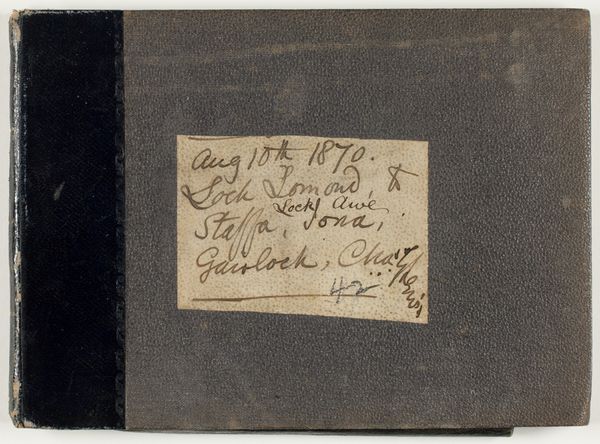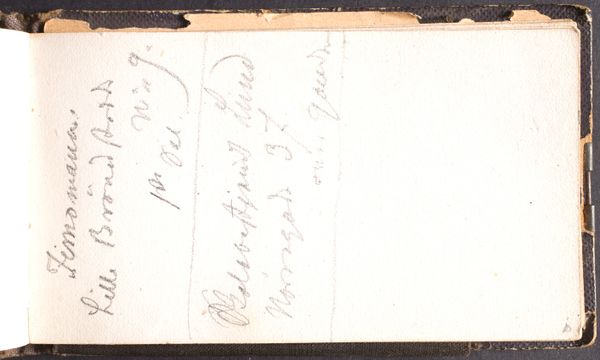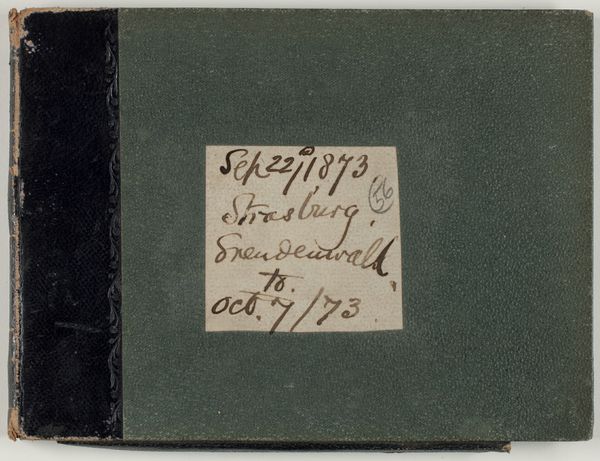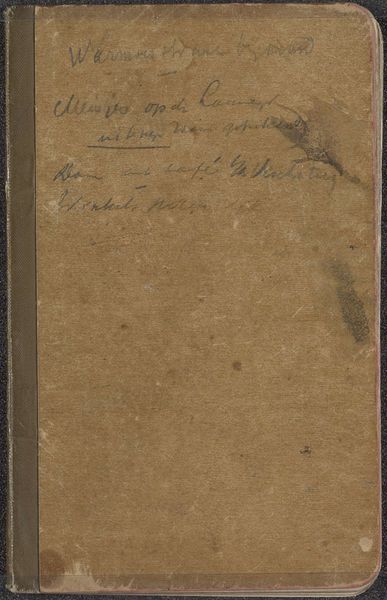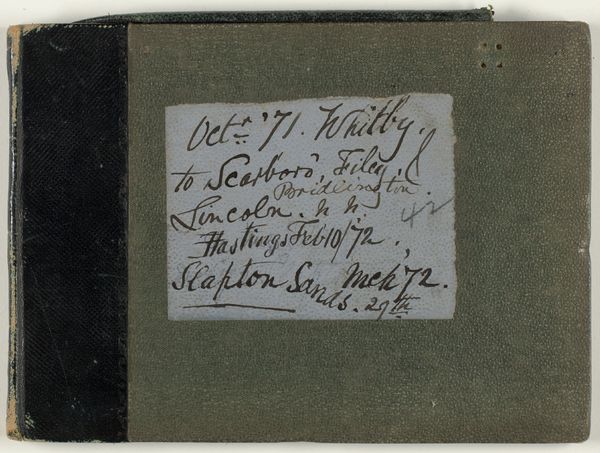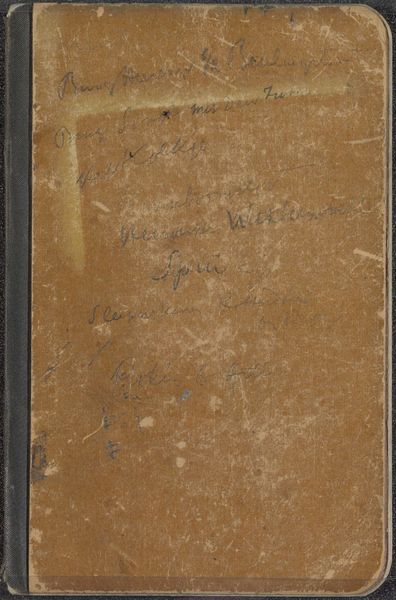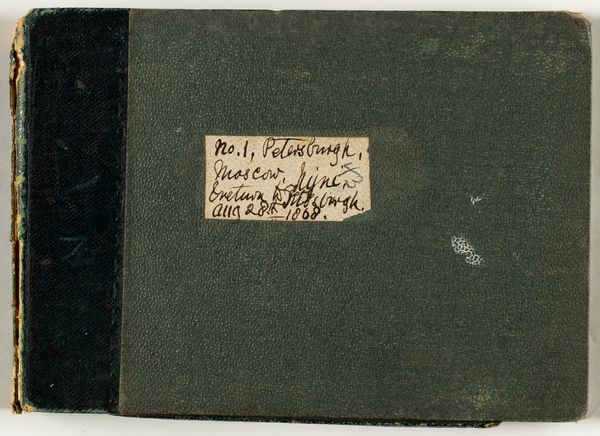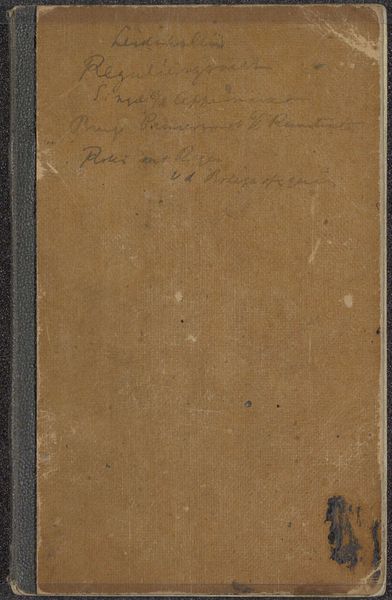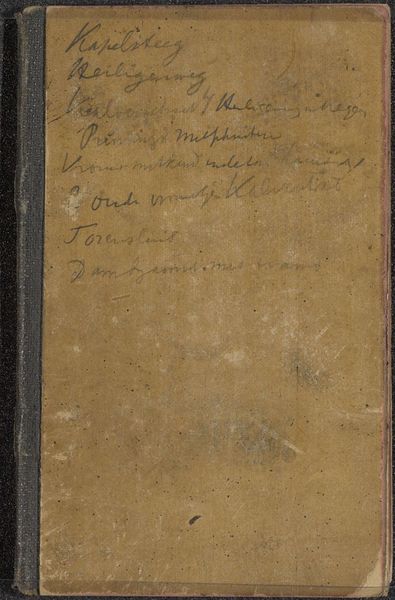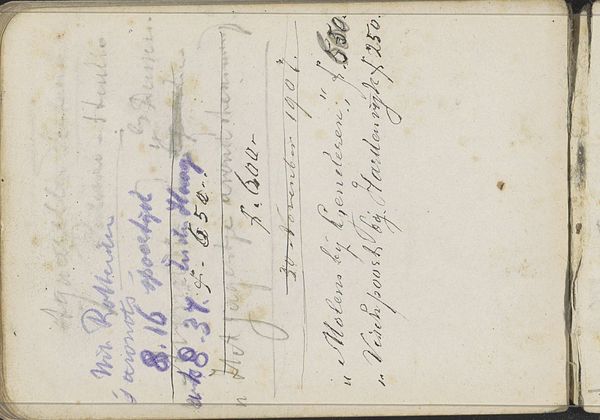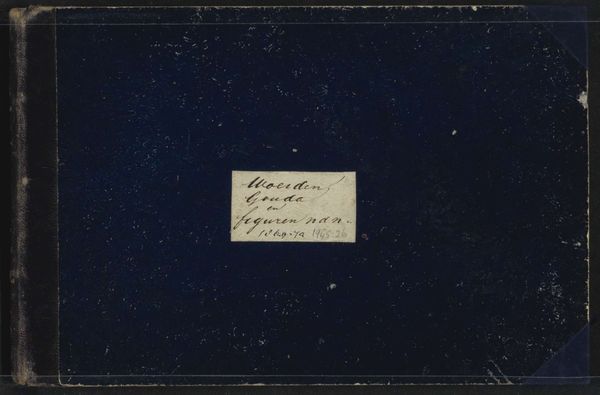
drawing, coloured-pencil, print, paper, pencil, graphite
#
drawing
#
coloured-pencil
# print
#
paper
#
coloured pencil
#
pencil
#
graphite
#
watercolor
Copyright: Public Domain
Editor: So, we’re looking at "Loch Finn, etc.," by Charles George Lewis, from 1874. It's a drawing with graphite, colored pencil, regular pencil, and watercolor on paper, currently at the Art Institute of Chicago. I find the inscription on the cover really compelling. What stands out to you about this piece? Curator: For me, this work invites a materialist inquiry. I'm curious about the availability and sourcing of those various pencils and pigments at that time and location in 1874. Who had access to those materials, and what was their intended use? Editor: Interesting! I was focused on the aesthetic, but you’re thinking about the physical object itself and who was even able to get these materials. Curator: Exactly. Consider also the labour involved in producing this book. Who made the paper? Bound the cover? These aren't passive materials. What class associations did the use of graphite versus coloured pencil hold then? Was color a signifier of luxury, a specialized skill, a professional practice? Editor: So, by understanding the means of production, we can start to unravel a social context around the artist and the work itself? Curator: Precisely. The creation of art has always been reliant on industrial manufacturing and systems of trade. Even something as seemingly simple as colored pencil brings to the surface networks of resource extraction, labor, and commodity exchange. Understanding the materiality brings us closer to the economic realities that shaped Lewis' world. Editor: This makes me consider the work in a new light; not just as a depiction but as a material object deeply connected to the production processes of its time. Thanks for opening my eyes to this! Curator: My pleasure! Thinking about art through a material lens allows us to see art history not as a series of isolated masterpieces, but as a reflection of broader social and economic structures.
Comments
No comments
Be the first to comment and join the conversation on the ultimate creative platform.
